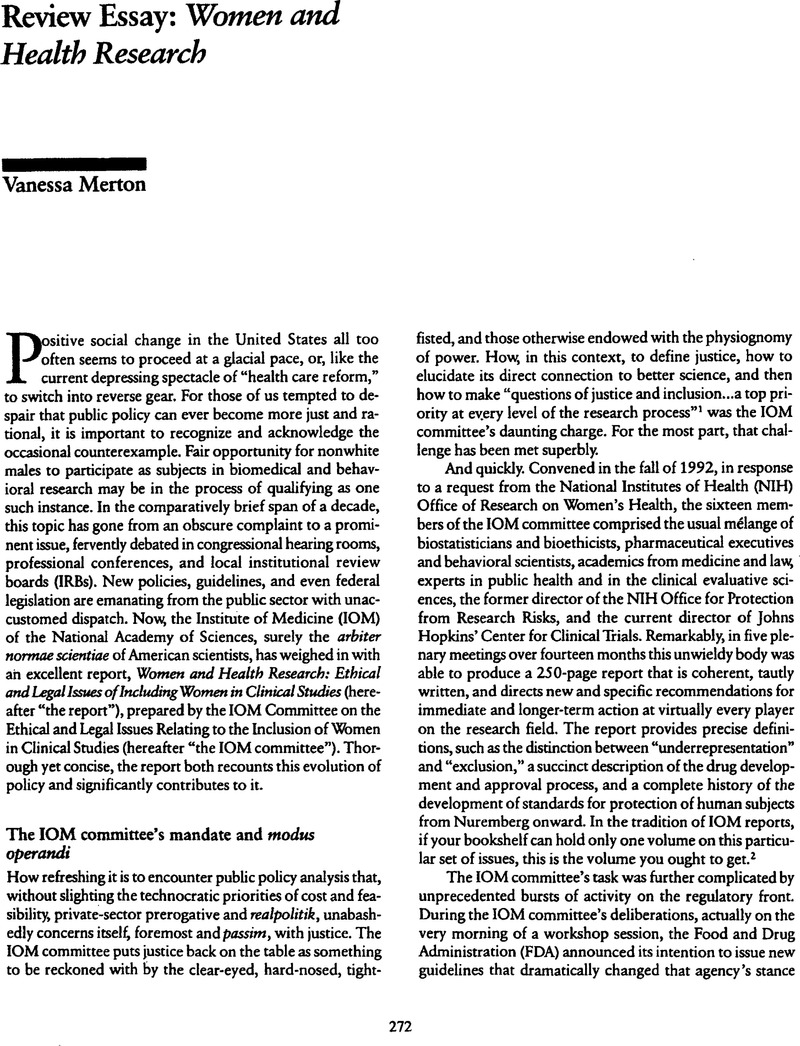Crossref Citations
This article has been cited by the following publications. This list is generated based on data provided by Crossref.
Neill, Kathleen M.
and
Chessa, Frank
1998.
Recruitment and retention of women in nontherapeutic clinical trials.
Applied Nursing Research,
Vol. 11,
Issue. 3,
p.
148.
Sherwin, Susan
2008.
Whither bioethics? How feminism can help reorient bioethics.
International Journal of Feminist Approaches to Bioethics,
Vol. 1,
Issue. 1,
p.
7.



